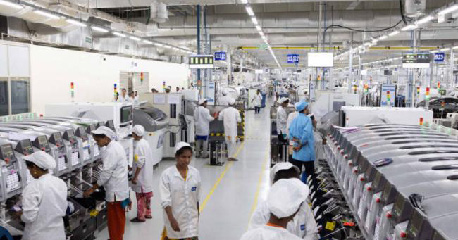![]()
Matsuo Saijo: There was a surprising testimony at the U.S. Senate hearing in May this year. Commerce Secretary Gina Raimondo stated that "an investigation into a tank of the Russian army seized in Ukraine revealed the use of second-hand semiconductors removed from refrigerators." Russia, which is backward in electronic technology, cannot purchase enough chips due to sanctions from Western countries, and uses chips for home appliances as a last resort.
Raimondo did not mention the type of semiconductor, but it is likely to be a power semiconductor. The tank has its own internal generator, but it can only produce low-quality electricity with wild voltage fluctuations, which will not be able to power the fire control system. In this case, what is needed are power semiconductors that regulate the current. However, Russia is unable to produce independently, and it seems that it barely drives the tank through the borrowing of second-hand semiconductors.
To be honest, power semiconductors are not cutting-edge products, they are close to ordinary general-purpose products. However, it is difficult for Russia to purchase even such semiconductors. This may be the main reason why Russia, which was originally thought to overwhelm the enemy with powerful firepower, is in a hard fight.
For example, semiconductors required for precise guidance of missiles require high-level technologies that are quite different from power semiconductors. The tip of the missile is equipped with "radar homing guidance", a detection system that can accurately grasp the ground terrain from a long distance, and a microprocessor that calculates the deviation between the orbit and the target at all times. In addition, it also has the functions of controlling the tail of the missile and flexibly correcting the trajectory.
Senior technicians in defense-related fields explained, "In the position of the driver's seat at the tip of the missile, sensors similar to clairvoyance, processors with extremely fast calculation speeds, and muscle masters (actuators) that flexibly drive the tail are gathered together to drive The missile went straight to the target."
By the way, these "passengers" are all composed of various chips, and 1 missile is equipped with easily more than 1,000 chips. It is self-evident that the higher the performance of the chip, the higher the accuracy of guidance, and the higher the ability to strike the enemy and intercept missiles.
Economic historian Chris Miller (Tufts University, USA) titled the final chapter of his recent book "Chip Wars" "From Steel to Silicon." During the Second World War, the production capacity of steel determined the war execution capabilities of various countries, and the United States defeated Japan and Germany. Subsequently, the nuclear balance of the United States and the Soviet Union was maintained, but since the Gulf War in 1990, silicon (chips) began to break this balance.
Even if the two camps have equal firepower, if there is a gap in the ability to guide the missile to the target location, the balance will become disequilibrium. The current situation in Ukraine highlights the fact that the United States and other Western countries currently have a huge advantage in the "silicon" battlefield.
Dai Tsuchiya, an associate partner at McKinsey & Company who received a doctorate in applied physics from Harvard University in the United States, pointed out, “With the development of AI, lethal autonomous weapon systems (LAWS) such as war robots have realistic implications. From around 2016, the strategic importance of chips has increased by a notch."
Since then, the United States has become vigilant against China's technological catch-up, and began to adopt strict restrictions, which can be called the "quasi-event mode." In particular, the new restrictions introduced by the United States in October this year not only target businesses, but also rarely target individuals.

